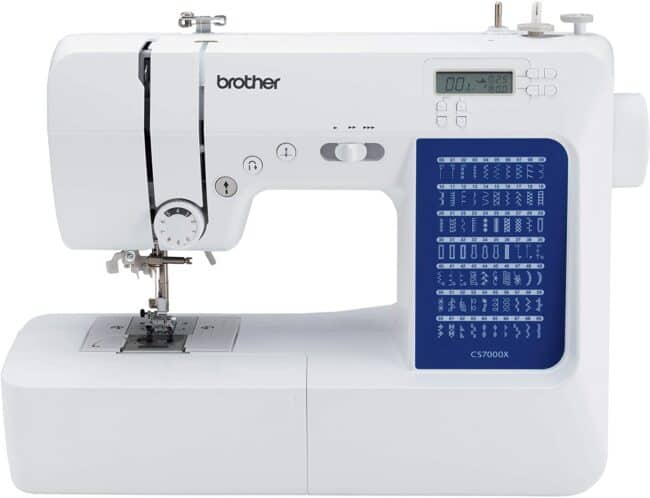
Sewing Machine Guide | Buying and Using Sewing Machines
Today is all about the sewing machine. We love sewing (especially clothing) here at Peek-a-Boo Pattern Shop....and you can't get very far if you don't have the right machines. You also won't get very far if you don't know how to use them. That's what this guide is for. To teach you all about what sewing machines you might need and how to use them. We'll also reference various other blog posts to give you all the resources you need to succeed in your sewing journey.
Guide to Different Sewing Machines for Sewing Clothing
Regarding sewing clothing, various types of machines cater to different needs and sewing techniques. Understanding the different machines available will help you choose the one that suits your sewing projects. We'll give you some info on the 3 machines that we find most valuable for sewing clothes: (1) The Basic Sewing Machine; (2) The Serger or Overlock; and (3) The Coverstitch.
Basic Machines
Basic machines are perfect for straight stitches, zigzag stitches, and buttonhole sewing. These machines are suitable for beginners as they are easy to operate and maintain. With adjustable stitch length and width, you have the flexibility to choose the right settings for different sewing jobs. Basic machines usually have a free arm, included accessories, and a presser foot to ease sewing tasks. Portable and lightweight, they are convenient for sewing on the go, making them a popular choice among sewing enthusiasts.

Serger or Overlock Machines
A serger, also known as an overlock machine, is a versatile option that is used to finish the edges of fabric. It is designed to create professional-looking seams and prevent fraying. Unlike a regular machine, a serger uses multiple threads simultaneously to create strong and secure stitches. It can trim the fabric as it sews, allowing for a neat and clean finish. Sergers are commonly used in garment construction, quilting, and home decor projects. They offer a range of stitch options, such as rolled hems, flatlocking, and gathering, making them an essential tool for anyone who wants to take their sewing projects to the next level. Whether you are a beginner or an experienced sewer, a serger can greatly enhance your sewing capabilities and help you achieve professional-looking results.

Coverstitch
If you're serious about sewing professional-looking clothing, then you may also want a cover stitch machine. Coverstitch machines are designed for hemming, topstitching, and decorative garment stitching. They create a professional hem finish on t-shirts, dresses, and other stretchy clothes. These machines offer adjustable stitch length, presser feet, and automatic thread cutter for speed and accuracy. With a larger sewing space, drop feed, and walking foot, coverstitch machines can handle larger projects with ease. Many coverstitch machines also include accessories for quilting, embroidery, and general sewing needs, making them a versatile addition to your sewing room.

Elements to Consider Before Buying
Before investing in new equipment, consider a few elements to ensure that it meets your specific sewing needs. Here are some key factors to keep in mind:
- LCD screen: An LCD screen allows you to easily navigate through stitch options and settings, providing a user-friendly interface. It also provides information on stitch length, width, and other settings, making selecting the right options for your sewing projects easier.
- Extension table: An extension table is a valuable accessory that provides extra support for larger sewing projects. It extends the sewing surface, giving you more space to work and ensuring that your fabric stays flat and aligned during sewing.
- Included extension table: Some machines have an included extension table, saving you the hassle of purchasing one separately. This can be cost-effective, especially if you frequently work on larger projects.
- Automatic thread cutter: An automatic thread cutter is a convenient feature that allows you to cut the thread with a simple button, eliminating the need for scissors and saving you time during sewing.
- Walking foot: A walking foot is essential for quilting and sewing multiple layers of fabric. It evenly feeds the fabric through the machine, preventing shifting and ensuring a smooth sewing experience.
- Sewing speed: Consider the sewing speed of the machine, especially if you're working on larger projects or require faster sewing. Some machines offer adjustable sewing speed, allowing you to control the pace according to your comfort level.
Some Recommendations for Different Machines
Now that you have a better understanding of the different types of machines, let's take a look at some recommendations for each category:
Beginner Machines
We have a full Guide on Top 10 Beginner Machines, but here are our top 3:
Brother CS7000X: Best Overall for Beginners. This machine offers a wide range of popular stitches, a free arm, and a user-friendly interface. | Singer 4423: Top Non-Computerized Machine. This singer heavy duty machine is known for its performance, high sewing speed, and durability. | Janome 2212: Best Janome Brand option for beginners, this machine is beginner-friendly, portable, and comes with a manual and accessories to get you started. |
|  | 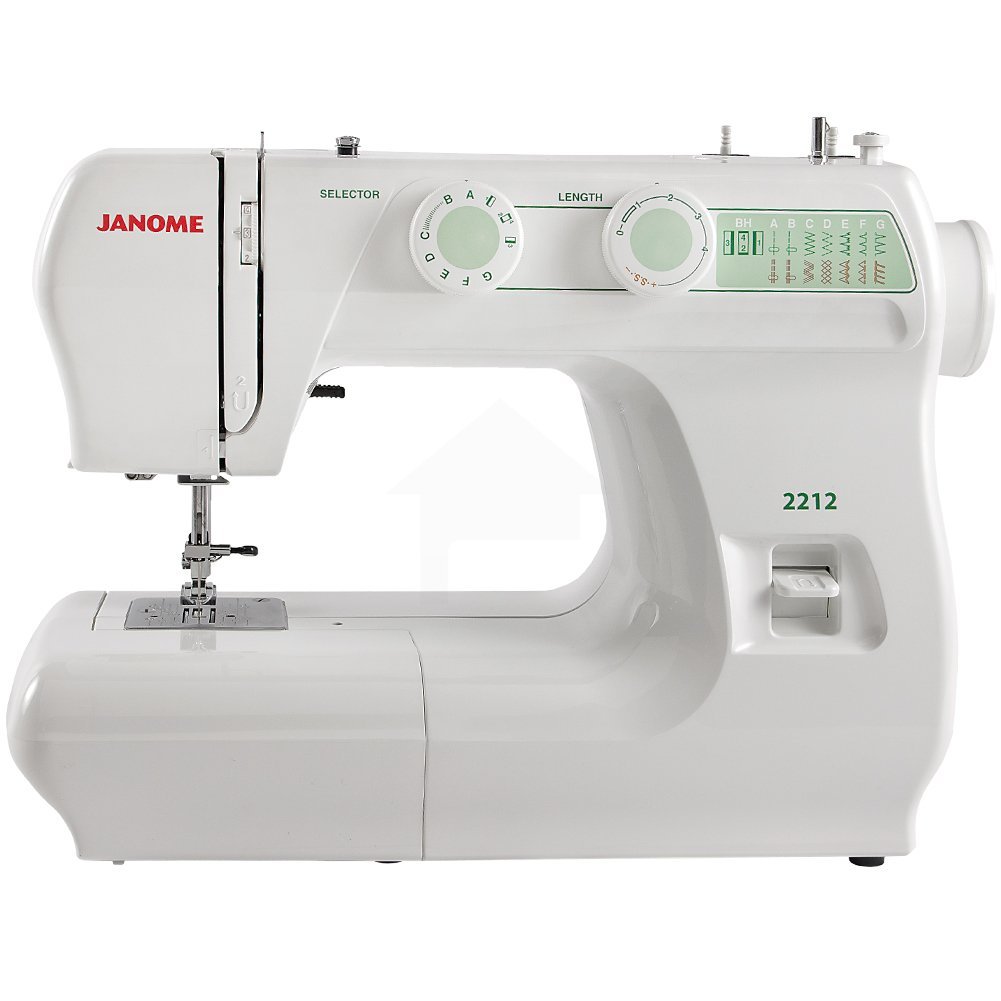 |
Advanced Sewing Machines
You can take a further look at our Top 10 Advanced Machines. Here are our favorites:
Baby Lock Brilliant: This machine is packed with advanced features, including a large LCD screen, a wide range of stitches, and a high sewing speed, making it ideal for advanced sewing projects. | Juki HZL-DX7: Known for its industrial-grade performance, this computerized option offers excellent stitch quality, a variety of presser feet, and high sewing speed. | Brother PS500: This machine combines computerized functionality with ease of use, making it perfect for larger projects, quilting, and embroidery. |
 | 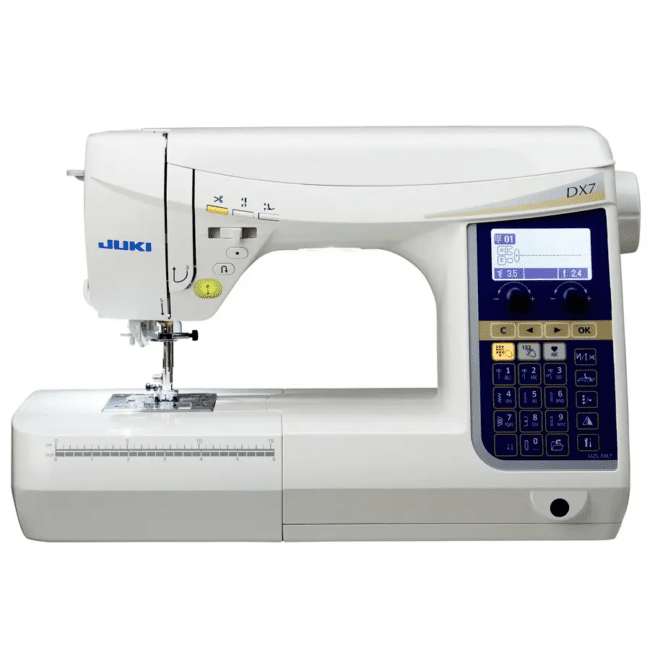 | 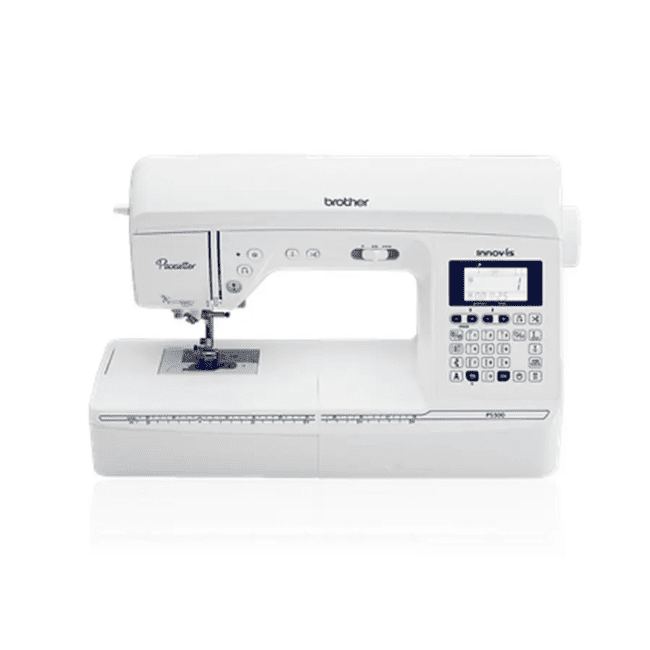 |
Serger or Overlock Machines
We have our Top 10 Sergers blog post but here are 3 favorites:
| Brother 1034D: A popular choice, this serger machine offers a variety of stitch options, adjustable stitch length, and differential feed for different sewing projects. | Juki 654: Known for its high-quality stitch, speed, and durability, this serger machine is a favorite among seamstresses. | Baby Lock Accolade: As a serger and coverstitch combo machine, this model offers both functionalities, making it a versatile choice for garment construction and professional finishes. |
 | 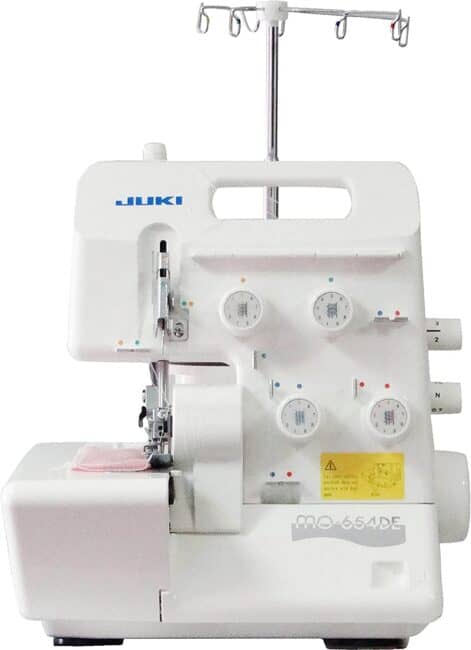 |  |
Coverstitch Machines
Finally, we have our Top 10 Coverstitch Machine. Here are 3 favorites:
| Brother 2340 CV: Best Beginner Machine, this coverstitch machine is user-friendly, affordable, and perfect for learning and practicing coverstitch techniques. | Baby Lock Euphoria: Top Advanced Machine, this coverstitch machine offers a variety of stitch options, adjustable stitch length, and presser foot pressure for ultimate control. | Juki 1500: Known for its industrial-grade performance, this intermediate coverstitch machine is suitable for alterations, professional hems, and other advanced sewing projects. |
 |  |  |
That wraps up our top recommendations. Make sure to take a look through our referenced blog posts to get more recommendations. We have good recommendations for a good first sewing machine, advanced machines, and even industrial machines. Some popular brands include Brother, Janome, and Singer for beginner machines. Juki makes some good intermediate machines and brands like Bernina, Bernette, and Baby Lock make some advanced machines.
Do you have any recommendations of sewing machines for kids?
Yes!!! We have a whole blog post up on our top sewing machines for kids. Our top recommendation in our article is the Janome Portable.
How to Set Up a Basic Machine
Now that you have a machine, setting it up correctly before you start sewing is essential. Here's a simple guide to get you started:
Sewing Machine Guide
Especially for your first machine, you'll need to know all about setting it up and what various parts are for. To get the job done, we created an excellent Sewing Machine Guide.

How to Thread a Sewing Machine
Proper threading ensures smooth sewing operations. Understanding the machine’s threading process is essentials. Incorrect threading may cause stitches to bunch or break. Proper bobbin insertion ensures seamless stitch formation. Tension adjustments affect the bobbin thread's tightness and stitch quality. A well-wound bobbin contributes to uniform stitch formation. Maintain consistent bobbin thread tension to prevent sewing issues. Learn how to thread your machine, complete with pictures, HERE.

How to Thread a Bobbin
Bobbin winding is a crucial step before sewing. Proper bobbin insertion ensures seamless stitch formation. Tension adjustments affect the bobbin thread's tightness and stitch quality. A well-wound bobbin contributes to uniform stitch formation. Maintain consistent bobbin thread tension to prevent sewing issues. Learn how to thread a bobbin, complete with pictures, HERE.

Tips for Using a Sewing Machine Effectively
To make the most of your equipment, here are some tips for using it effectively:
Practice Regular Maintenance
- Clean, remove lint, and change sewing needles frequently.
- Oil it according to the manufacturer's recommendations.
- Check the tension, presser foot, and feed dogs for smooth stitching.
- Maintain a well-lit and clutter-free sewing space for efficient sewing.
- Schedule periodic professional servicing.
For more info, check out our guide to Sewing Machine Maintenance:
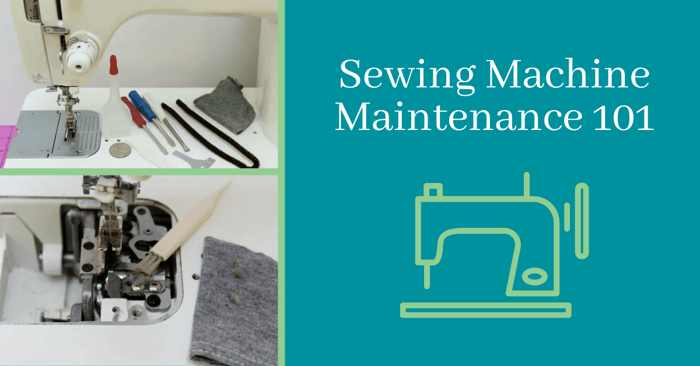
Learn to Troubleshoot Common Problems
- Identify and address common issues, such as thread jams or bobbin tangles.
- Adjust the stitch length, presser foot pressure, and needle position for different fabrics.
- Master the use of seam allowance, zigzag stitches, and buttonhole settings.
- Understand the importance of proper bobbin threading and bobbin tension.
- Seek guidance from experts on maintenance and troubleshooting.
It's also worth making sure you know everything you need to about your sewing machine warranty in case you run into further issues.
How often should you service your sewing machine and what kind of maintenance does it require?
It is recommended to service your machine at least once a year, or more frequently if you use it heavily. Regular maintenance includes cleaning the machine, oiling the moving parts, and checking for any loose screws or belts. Following the manufacturer's instructions is crucial for proper machine care.
Conclusion
Investing in a good machine is essential to become a skilled seamstress. Whether you are a beginner or an expert, understanding the different types of sewing machines available and their features is crucial in making the right choice. For clothing, having a high price sewing machine isn't a must but you may want to invest in various machines as you become more advanced. Consider your sewing skills and what you want to create. As you enhance your sewing skills, you may need a more advanced machine to take on complex projects. With the right sewing machine and diligent practice, you can unleash your creativity and create beautiful clothes for yourself and others.
Thanks again for joining us today. Before you leave, join us on social media by joining our Facebook Group or follow us on Instagram. Happy Sewing!


